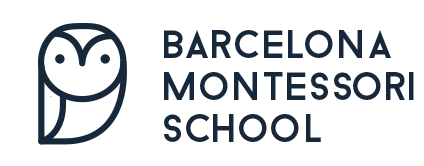A Parent Observation in Primary
OBSERVATION PRIMARY – MONDAY 20th MARCH
Reyes, Children’s House Parent Representative
I enter the class at 09:10. All the children are already working on an activity. I sit in a chair and begin the observation. There are children working in groups, sitting at a table sharing tasks and impressions. Others are working individually. Some are using the computer (they later clarified that it is the older students the ones who have access to a computer, they have a specific time for its use), others read books. Many of them have a piece of paper with the headline “Work Journal”. It is a sheet of paper in which, depending on their age and the phase they are in, they write down with the highest detail possible the activities they carry out during the day/week. This paper is read by teachers to keep track.
The main guide, starts working alone at his desk with a computer. After 10 minutes he joins a group of about 4 students to work on math. Laura, another of the guides, is the one who seems to be monitoring the "work journals" and assisting the children who request it. Then Olivia, the third guide, comes into the classroom and starts working one-on-one with a child.
The first thing that strikes me is the silence reigning in the class. Many children work on different activities, in groups and sharing impressions, but with a low tone of voice that allows everyone to work without disturbance. Seeing the dynamics of the class, I think about how mine worked when I was little. I went to a very traditional school as well as very religious. We sat at the desk and they taught us the lesson, with a lot of listening and writing down notes and little interaction with peers or engagement with teacher. We had a very defined and structured study plan every year. I remember how hard it was for us to participate in class, to ask questions. We could not leave our desk nor talk to any classmates sitting at desks nearby.
I compare him to the Guide sitting at the same table with 4 other students (at the same level) and watch how they learn math together. The children stand up to get the materials they need to fulfil their activity; they do not have to ask for permission. In fact, more than a school classroom, the space reminds me of a company office, where each of its workers knows their role and mission in the group and executes it autonomously and with confidence.
Obviously, I have many doubts and questions. It's hard to fully understand how something so different from what you're used to can work. Are they really learning everything they have to at their age? Who makes sure of it? How do they choose the subject to learn each day? How do they choose who to work with? Who supervises that when they talk to each other they are talking about academic content and not about the birthday party next weekend? Why are only those 4 kids with the Guide learning math? And the rest, when will they learn it? If there are so many “mini groups” working and only 2/3 guides, how can they make sure that while they are working, they acquire correct knowledge, and not acquire incorrect knowledge from mistakes that are not going to be corrected? How and when is the result evaluated? Are there enough teachers for so many autonomous children? What about children who have a harder time working without constant supervision from a guide? Is the school getting the most out of the different abilities of each of the children? I have chosen a Montessori school because I do not believe in the traditional educational system in which I was educated, but I cannot stop comparing it with the traditional educational system in which I was educated...
In short, I loved seeing the children in an environment so different from what I'm used to. I think they generally feel valued and respected. I also believe that it requires a much larger effort, compared to traditional schools, in terms of human resources and academic knowledge to be able to execute the method and get the best out of each child.



